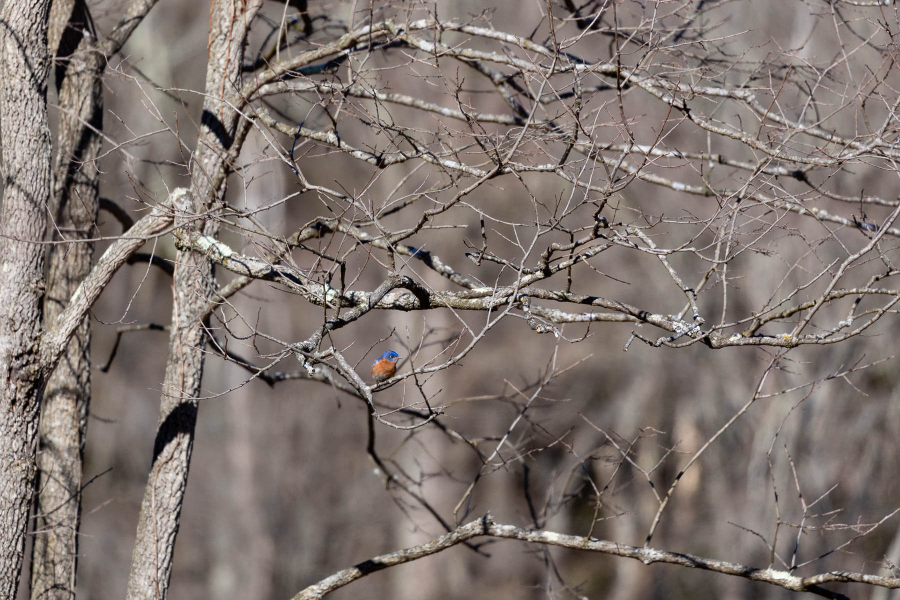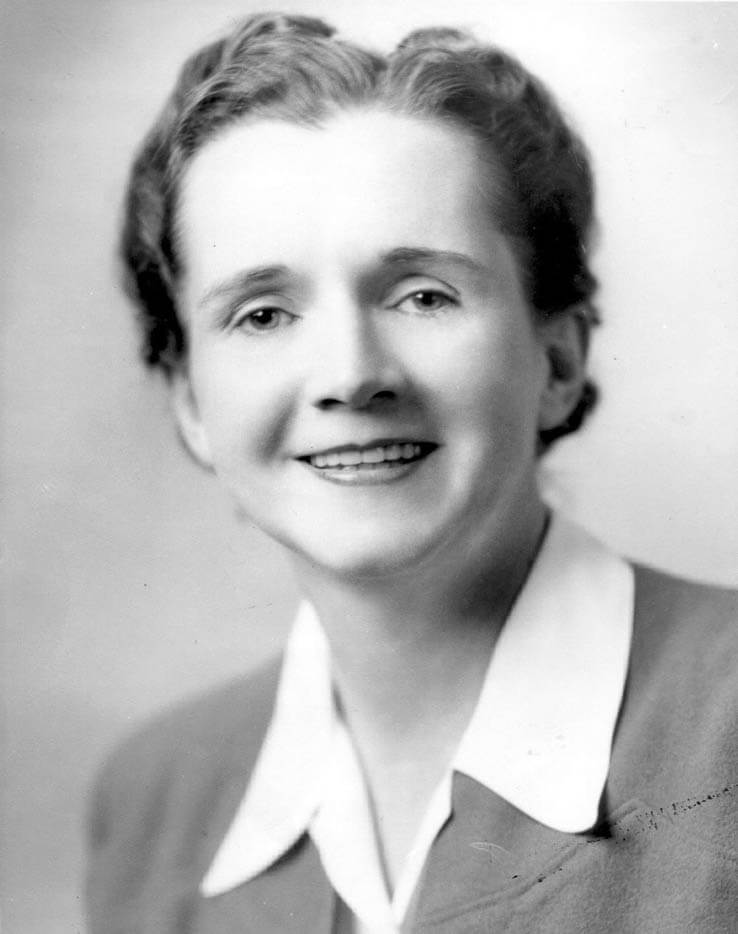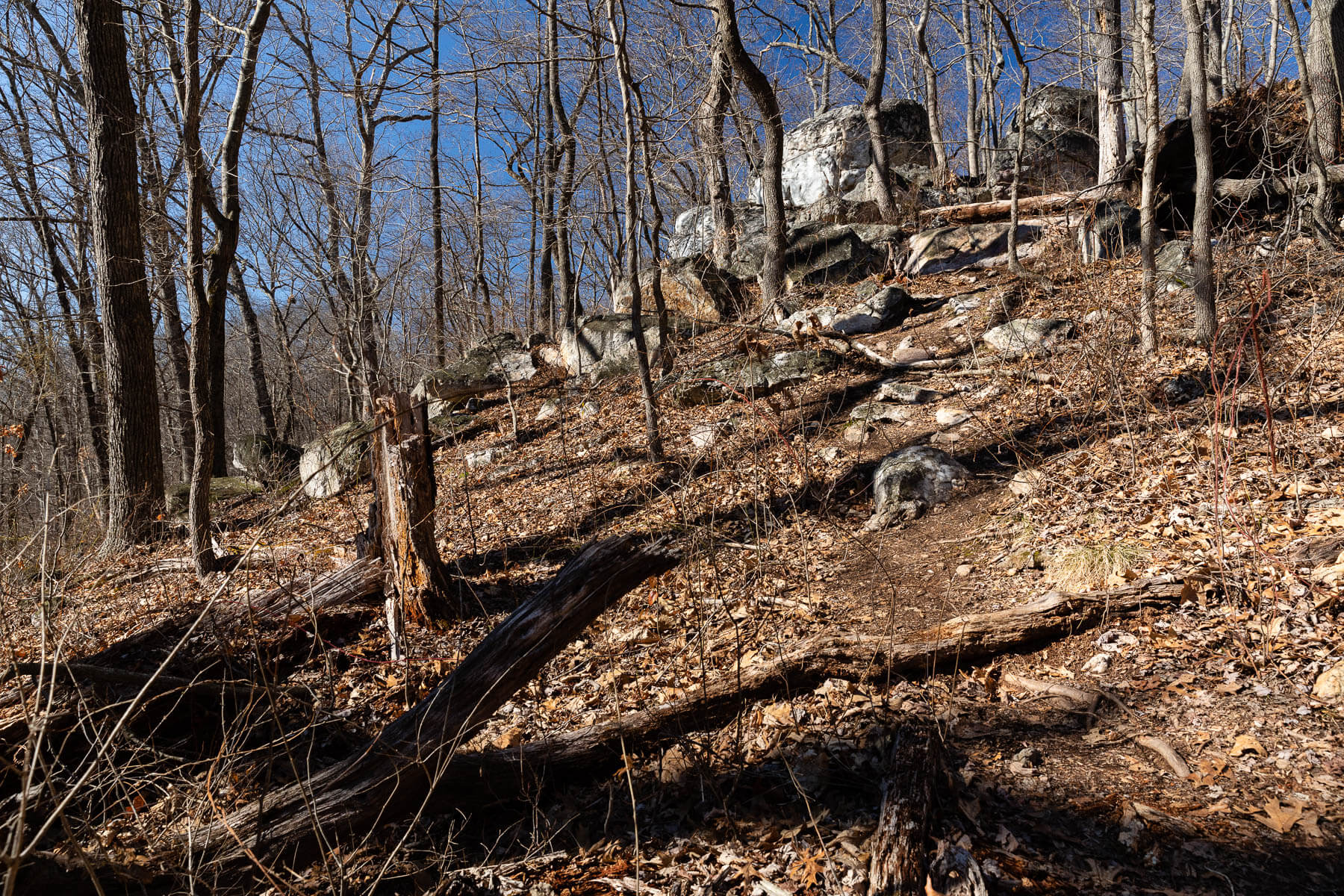On land preserved in Rachel Carson’s name, spring isn’t so silent

On a clear winter day, standing in the middle of a grassland awaiting the year’s first sprouts, it feels perfectly quiet in the absence of traffic and city noises. That is, until your ears adjust to a softer chorus.
Eastern bluebirds babble on bare branches, hunting for unseen insects amid last year’s plant stalks. An American crow’s gravelly call falls from a cloudless sky and lands in the distant woods. The staccato cursing of a woodpecker echoes through the naked tree canopy while sparrows rustle through the understory below. True silence is chilling, but nature’s conversations are something else—calming, comforting, reassuring.
Rachel Carson Conservation Park would feel much emptier without its namesake author’s warning—published as the book Silent Spring in 1962—that pesticides were threatening birds, other wildlife and our own wellbeing. That’s assuming the park would exist at all if there hadn’t been an effort by Montgomery County, Maryland, to honor Carson, who lived in nearby Silver Spring.


The park “contains some of the best examples of natural resources in Montgomery County,” said Jose Gallardo, a spokesperson for the Maryland-National Capital Park and Planning Commission, in an email. “Most of the park was acquired just after Ms. Carson's death in 1964, although there were periodic acquisitions up to and through 1990.”
Today the park holds 650 acres dedicated to environmental preservation, with six miles of trails for hiking and equestrian use. It features rocky outcrops and connects to the longer Rachel Carson Greenway. The greenway includes natural sites as well as cultural ones, such as Burnt Mills, one of the earliest grist mills in the United States, found near Carson’s home. It also includes Woodlawn Manor Cultural Park, which celebrates the area’s Quaker history and involvement with the Underground Railroad.
Current efforts offer continuing support for wildlife at Rachel Carson Conservation Park. The grassland, complete with bluebird nest boxes, has been restored to native vegetation that supports more species. Along the trails, invasive vines hang dead and drying from tall tulip poplars, vanquished by the county’s Weed Warrior Volunteer Program. A sign encourages visitors to try plogging—the combination of jogging and picking up litter that first became a craze in Sweden. Near the parking lot a small patch of plants is marked as a monarch waystation, crafted to support populations of the insect and other native pollinators who, like the birds, have fallen victim to widespread use of chemicals—not pesticides, but herbicides.
In her book, Carson cautioned against indiscriminate attempts to control nature, which is just as pressing a message amid today’s environmental challenges as it was over 50 years ago. At her park and elsewhere, her legacy ensures the birdsong in the trees and the positive work on the ground below that continues to be carried out by so many who were inspired by her words and actions.

Comments
In tribute to Rachel Carson, drawings entitled "La robe de Médée", presented at the Natural History Museum of Geneva: https://1011-art.blogspot.com/p/la-robe-de-medee.html
Thank you!
Your comment has been received. Before it can be published, the comment will be reviewed by our team to ensure it adheres with our rules of engagement.
Back to recent stories